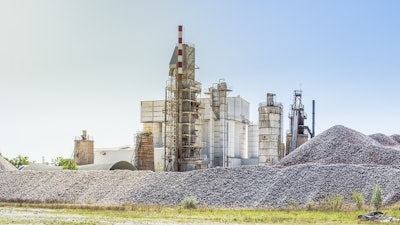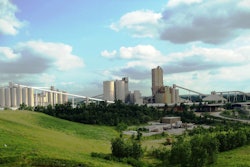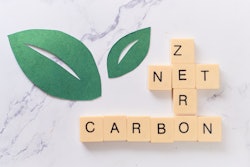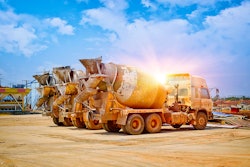
 Mikaela DeRousseau, Data & Methodology Manager, Building TransparencyBuilding Transparency
Mikaela DeRousseau, Data & Methodology Manager, Building TransparencyBuilding Transparency
The latest IPCC climate report, for the first time, accounted for concrete carbonation in the global emissions inventory, which is important because the built environment represents a quantifiable carbon dioxide sink. The report cites a global emissions inventory study, which reports that 50% of carbon dioxide emissions from the calcination reaction during cement-making can be sequestered in concrete. However, it is crucial to understand that calcination emissions are only a fraction of the total life cycle emissions of concrete. In other words, this does not mean that 50% of carbon dioxide emissions from the full life cycle of concrete can be sequestered.
To illustrate this distinction, below we outline the full emissions picture of concrete by reviewing the life cycle stages that contribute to concrete’s carbon dioxide emissions. When all life-cycle stages are considered, the sequestration of carbon dioxide is a small fraction of the total life-cycle greenhouse gas (GHG) emissions. The figure below illustrates the life-cycle stages which contribute to GHG emissions from concrete. They include raw material production, transportation, construction, use, and end-of-life.
 Sample life cycle stages for concrete.Building Transparency
Sample life cycle stages for concrete.Building Transparency
CO2 Emissions of Concrete
From Raw Material Production
Concrete is composed primarily of cement, water, rocks, and sand. To understand the full emissions picture of concrete, one must quantify the emissions created when manufacturing these materials. Because its production involves various processes to convert raw materials into the resources needed, requiring high levels of energy, cement production generates a large quantity of carbon dioxide emissions.
In addition, a reaction called calcination occurs during cement production, which releases carbon dioxide into the atmosphere. Thus, the global warming potential of making cement is both the result of the fuel and electricity necessary to grind and heat these raw materials, as well as direct emissions from the calcination reaction. Additionally, GHG emissions brought about due to the quarrying, grinding, and processing of aggregate materials are less substantial than that of cement but are not negligible in the overall calculation of cement’s total carbon dioxide emissions.
Concrete's Full Life Cycle
GHG emissions from raw material production represent the most significant contributors to the global warming potential of concrete. However, other life-cycle stages contribute as well. Fuels and electricity are used during the transportation, construction, demolition, and waste processing of concrete, which contributes to the total global warming potential of the material.
Complexities of Concrete Carbonation
Concrete carbonation occurs during the use and end-of-life phases of concrete. It is a diffusion-based process that is highly sensitive to a variety of conditions. For instance, the amount of exposed surface area alone can greatly impact the amount of carbon dioxide that is sequestered per quantity of concrete. In addition, the exposure type of the material, including if it is inside or outside, exposed to rain, or underground, should be considered.
Other factors include how much cement is in the concrete and the total lifetime of the concrete. Thus, the quantity of carbon dioxide sequestered for a particular building or infrastructure project will vary based on the different values for these factors. Even in the best-case scenario, sequestration of carbon dioxide will be a relatively small percentage of the total GHGs emitted during the product life cycle.
For instance, by pairing the carbonation calculation method prescribed in the BRE Global Product Category Rules with the life cycle GWP for several concrete design scenarios, the quantity of carbon dioxide sequestered as a fraction of the total life cycle emissions is most often less than 10%. However, in select scenarios where a concrete product is expected to fully carbonate, such as concrete masonry, this percentage can be slightly greater than 10%.
Ultimately, evaluating the carbon dioxide emissions and carbonation of concrete is a complex process that involves accounting for multiple factors. While the inclusion of concrete carbonation in the latest IPCC climate report is an important step towards a more sustainable future for the industry, it’s only a small part of the larger conversation.
About the author
Mikaela DeRousseau is a Data & Methodology Manager at Building Transparency, a nonprofit organization that aims to reduce embodied carbon emissions from the built environment by providing the free, open-access tools and data needed for decarbonizing the buildings and infrastructure.



















